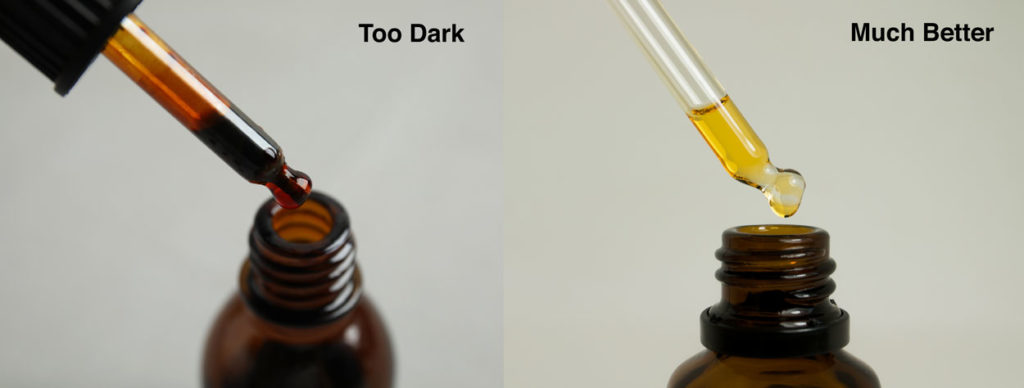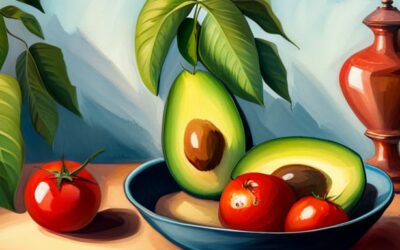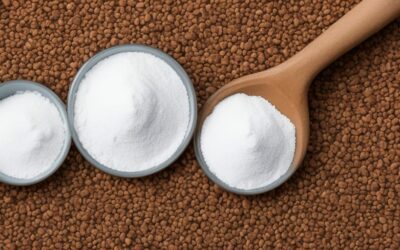Key Points:
- Place 1 – 2 drops of iodine on any food to test for starch
- If the iodine stays the same colour it’s starch free
- If it turns black it contains starch
This is such a simple method.
Anyone can do this at any time and in any place (whether you are at home or in a restaurant) and it takes just seconds.
Just invest in a small bottle of iodine.
You’ll then have everything you need to test for starch in your food for years to come.
The Method:
First buy some iodine.
Any brand will do. You’ll get the same reaction each time, regardless of the supplier.
Got your iodine ready?
Great, to test your food for starch here’s what you need to do:
Step 1: First isolate the food or ingredient you want to test
You don’t want to accidentally consume any iodine as it can be toxic when ingested. An easy way to do this is just to break off a little of what you want to test and put it on a separate plate or a paper napkin, or whatever you have to hand.
Step 2: Pour ONE or TWO drops of iodine onto the food
Step 3: Now watch! If it turns an inky jet black the food contains starch
There’s no wait time and results will be instant (i.e. within 1 – 2 seconds)
Important Points:
- Once again, any brand of iodine will do – just buy the cheapest you can find
- Make sure the iodine isn’t too dark to begin with – otherwise you won’t be able to easily tell any change in colour. Simply dilute it with water if you need to until it’s a light tea colour

I’ll just to explain that second point in a little more detail.
If starch is present in food the iodine will turn a jet black.
It’s a really simple observation. However, if the iodine you have bought is already very dark or black, it can be harder to notice the transformation.
Don’t worry if this happens. Here’s what to do.
Pick up one of those really inexpensive tincture bottles online and pour a small amount of your dark iodine in there. Now fill the rest up with water.
Just do it by eye, it really doesn’t need to be precise. What you’re looking for is for the iodine to be a kind of light-ish tea colour.
Now when you put a drop or two onto a starchy ingredient you will really be able to tell the transformation.
If it stays the same colour then you are fine, there is no starch present. If it changes to that jet, inky black then you know that it is starchy.
Pro Testing Tips:
Tip #1: Test it on bread very first time so that you know what to expect
The first time you do the starch test, try it out on a piece of bread.
Bread is extremely starchy and so you will be able to see the transformation.
If your iodine goes from that light tea colour to black then you know it is working and that you are set up correctly.
Tip #2: Use it as a way to boost your confidence early on in the diet
The iodine test is particularly useful when you are first starting out on the no starch diet.
That’s because at the beginning of your journey it can feel like a minefield and be quite overwhelming.
Sometimes you just might not feel like going on the internet and wading through a lot of nonsense to find out whether the thing you’re about to eat this starchy.
Other times you might be unsure what is in a sauce or what ingredients a restaurant is using.
This offers a really elegant, discreet and fast and easy way of figuring that out.
Tip #3: Carrying a bottle is essential if you are travelling
If you can’t read the menu or are presented with unfamiliar ingredients it can be a godsend and save tricky conversations.
It also means you feel like you’re causing offence by constantly asking ‘weird sounding’ questions about food.
The little tincture bottles are small enough that it’s easy to put in a pocket or in a bag without taking up any noticeable room.
Tip #4: Always keep a bottle handy in the kitchen
Keep a little bottle on the shelf in the kitchen for ‘just in case’ moments.
You’ll probably notice a few months into your diet that your knowledge about what foods and ingredients are starchy ramps up exponentially and you will need it less and less.
Eventually you will have an encyclopaedia in your mind of which foods work for you and which don’t based on everything you’ve tested and tried during the elimination diet.
However, it’s always good to have your iodine there as a backup when you need it.
Tip #5: It’s great for testing those borderline ingredients
There are some ingredients that are normally safe to eat but can turn starchy if they are stored too long or even if they are produced a certain way.
For example, while cauliflower is normally fine, you do get the occasion where it turns starchy. The iodine test is just a great way of confirming if you are ever unsure.
Ok, that’s it for the iodine test. I hope you found this guide helpful.
This really works best in conjunction with all the other tools you can use to aid you on the no starch diet and elimination diet.
Click here for a list of generally safe starch free foods and remember you can also download the Google docs version which you can save for viewing offline.
This is helpful if you have access to your phone but not the internet (i.e. when abroad) or if you don’t want to have to wade through different pages on this website to get to the information you need!
Got any thoughts, tips or ideas to add? Feel free to add a comment below.



0 Comments